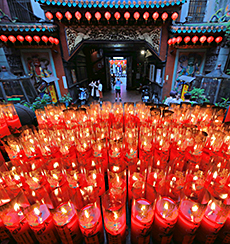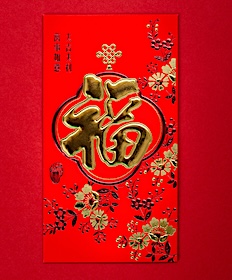搜尋結果
Chinese zodiac. The Chinese zodiac is a traditional classification scheme based on the Chinese calendar that assigns an animal and its reputed attributes to each year in a repeating twelve-year cycle. [1] In traditional Chinese culture, the Chinese zodiac is very important and exists as a reflection of Chinese philosophy and culture. [2]
Some characters, whether simplified or not, look the same in Chinese and Japanese, but have different stroke orders. For example, in Japan, 必 is written with the top dot first, while the Traditional stroke order writes the 丿 first. In the characters 王 and 玉, the vertical stroke is the third stroke in Chinese, but the second stroke in ...
The Vietnamese dragon (Vietnamese: rồng 龍) was a mythical creature that was often used as a deity symbol and was associated with royalty. Similar to other cultures, dragons in Vietnamese culture represent yang and godly beings associated with creation and life.
Anno Domini inscription at Klagenfurt Cathedral, Austria The terms anno Domini (AD) and before Christ (BC) are used when designating years in the Julian and Gregorian calendars.The term anno Domini is Medieval Latin and means "in the year of the Lord" but is often presented using "our Lord" instead of "the Lord", taken from the full original phrase "anno Domini nostri Jesu Christi", which ...
Nicholas of Worcester (died 1124) was the prior of the Benedictine priory of Worcester Cathedral (crypt pictured) from about 1115 until his death. He was born around the time of the Norman Conquest.It is not known who his parents were, but William of Malmesbury wrote that he was "of exalted descent", and it has been argued that he was a son of King Harold Godwinson.
Pre-scientific history Dinosaur fossils have been known for millennia, although their true nature was not recognized. The Chinese considered them to be dragon bones and documented them as such. For example, Huayang Guo Zhi (華陽國志), a gazetteer compiled by Chang Qu (常璩) during the Western Jin Dynasty (265–316), reported the discovery of dragon bones at Wucheng in Sichuan Province.
The Gregorian calendar, like the Julian calendar, is a solar calendar with 12 months of 28–31 days each. The year in both calendars consists of 365 days, with a leap day being added to February in the leap years. The months and length of months in the Gregorian calendar are the same as for the Julian calendar.























